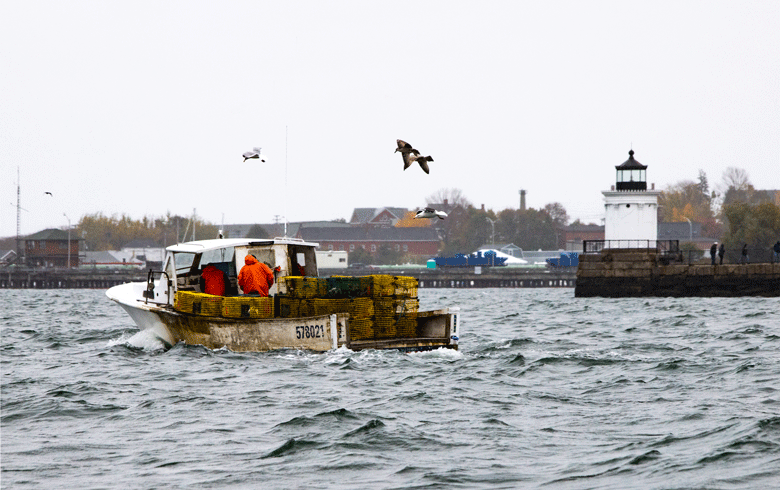Casco Bay is talking to us, but do we know what message it is sending?
Last month, Friends of Casco Bay scientist Mike Doan and Casco Baykeeper Ivy Frignoca gave some answers to that question in a remote presentation to about 100 participants concerned about the health of the vast Southern Maine waterway that stretches from Portland Head in Cape Elizabeth to Cape Small in Phippsburg. About a half-dozen of the roughly 130 islands in the bay are inhabited year-round.
Friends of Casco Bay has been monitoring the bay’s water quality for about 29 years. Three permanent sites—continuous monitoring stations located in Harpswell, Cundys Harbor, and Portland—operate year-round. The Harpswell site was established in 2016. Friends of Casco Bay established the two other sites this year.
The scarcity of algae was another boon for the bay’s aquaculture industry…
In addition, the group samples water quality every three weeks from May through October at 22 sites spread around the bay. Some of those samples are collected from aboard the organization’s research vessel, the 28-foot lobster boat Baykeeper. Doan or other members of the Friends of Casco Bay science team collect other samples from shoreside sites.
With the 2021 monitoring season just about done, Frignoca and Doan had at least some preliminary findings to report, although some of the data they collected may have raised more questions than they answered.
First, Doan reported that the data confirmed that Maine enjoyed a much warmer winter than normal, with water temperatures “well above average” from that of the past five or six years. Even the heavy rains of July “didn’t have that much influence to reduce temperatures,” Frignoca said.
As with temperatures, the salinity of the waters of Casco Bay was higher. In all likelihood, the warm winter contributed to those higher levels, she said. Historically, high spring river flows resulting from heavy snow melt could be relied on to reduce salinity. Last winter, warm temperatures meant less snow, less snow melt and, consequently, reduced fresh water flowing into the bay. That isn’t necessarily bad news.
Casco Bay is home base for a burgeoning oyster farming industry and, Frignoca said, oysters harvested from those farms this year were “especially salty.” She proclaimed them “luscious.”
This year, monitoring recorded “less nuisance algal blooms” than in recent past years, except in Portland Harbor where the algal blooms were “consistent and persistent,” she said. The scarcity of algae was another boon for the bay’s aquaculture industry as the Department of Marine Resources ordered no shutdowns for toxic algal blooms.
Why there were fewer algal blooms this year is unclear, but the organization is working with the Maine Department of Environmental Protection to establish a numerical “threshold” for algal levels that can be used by the state and municipalities around the bay for planning and regulation of storm water runoff.
As is often the case, news about the Casco Bay and the Gulf of Maine is decidedly mixed. While reduced freshwater flows into the bay may have produced some benefits, it was also a cause for concern.
The impacts of prolonged warm, dry spells punctuated by heavy storms is as yet unclear. But, Frignoca said, there was so much drought in Maine last summer that it seemed as if the ground was absorbing more water.
“We didn’t see the runoff we’d expect for a wet July, Frignoca said. “I think we can expect more summers like that.”





